B cells modulate lung antiviral inflammatory responses via the neurotransmitter acetylcholine
- PMID: 40263611
- PMCID: PMC12043518
- DOI: 10.1038/s41590-025-02124-8
B cells modulate lung antiviral inflammatory responses via the neurotransmitter acetylcholine
Abstract
The rapid onset of innate immune defenses is critical for early control of viral replication in an infected host and yet it can also lead to irreversible tissue damage, especially in the respiratory tract. Sensitive regulators must exist that modulate inflammation, while controlling the infection. In the present study, we identified acetylcholine (ACh)-producing B cells as such early regulators. B cells are the most prevalent ACh-producing leukocyte population in the respiratory tract demonstrated with choline acetyltransferase (ChAT)-green fluorescent protein (GFP) reporter mice, both before and after infection with influenza A virus. Mice lacking ChAT in B cells, disabling their ability to generate ACh (ChatBKO), but not those lacking ChAT in T cells, significantly, selectively and directly suppressed α7-nicotinic-ACh receptor-expressing interstitial, but not alveolar, macrophage activation and their ability to secrete tumor necrosis factor (TNF), while better controlling virus replication at 1 d postinfection. Conversely, TNF blockade via monoclonal antibody treatment increased viral loads at that time. By day 10 of infection, ChatBKO mice showed increased local and systemic inflammation and reduced signs of lung epithelial repair despite similar viral loads and viral clearance. Thus, B cells are key participants of an immediate early regulatory cascade that controls lung tissue damage after viral infection, shifting the balance toward reduced inflammation at the cost of enhanced early viral replication.
© 2025. The Author(s).
Conflict of interest statement
Competing interests: The authors declare no competing interests.
Figures


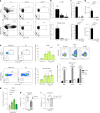
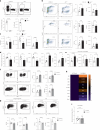
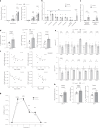

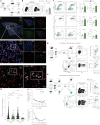

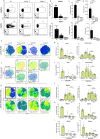

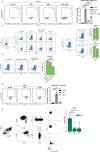

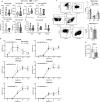
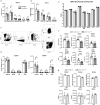



Update of
-
B cells modulate lung antiviral inflammatory responses via the neurotransmitter acetylcholine.Res Sq [Preprint]. 2024 Jun 25:rs.3.rs-4421566. doi: 10.21203/rs.3.rs-4421566/v1. Res Sq. 2024. Update in: Nat Immunol. 2025 May;26(5):775-789. doi: 10.1038/s41590-025-02124-8. PMID: 38978583 Free PMC article. Updated. Preprint.
Similar articles
-
B cells modulate lung antiviral inflammatory responses via the neurotransmitter acetylcholine.Res Sq [Preprint]. 2024 Jun 25:rs.3.rs-4421566. doi: 10.21203/rs.3.rs-4421566/v1. Res Sq. 2024. Update in: Nat Immunol. 2025 May;26(5):775-789. doi: 10.1038/s41590-025-02124-8. PMID: 38978583 Free PMC article. Updated. Preprint.
-
B cell-derived acetylcholine promotes liver regeneration by regulating Kupffer cell and hepatic CD8+ T cell function.Immunity. 2025 May 13;58(5):1201-1216.e7. doi: 10.1016/j.immuni.2025.04.002. Epub 2025 Apr 25. Immunity. 2025. PMID: 40286791
-
Lymphocyte-derived ACh regulates local innate but not adaptive immunity.Proc Natl Acad Sci U S A. 2013 Jan 22;110(4):1410-5. doi: 10.1073/pnas.1221655110. Epub 2013 Jan 7. Proc Natl Acad Sci U S A. 2013. PMID: 23297238 Free PMC article.
-
Physiological functions of the cholinergic system in immune cells.J Pharmacol Sci. 2017 May;134(1):1-21. doi: 10.1016/j.jphs.2017.05.002. Epub 2017 May 12. J Pharmacol Sci. 2017. PMID: 28552584 Review.
-
Critical roles of acetylcholine and the muscarinic and nicotinic acetylcholine receptors in the regulation of immune function.Life Sci. 2012 Nov 27;91(21-22):1027-32. doi: 10.1016/j.lfs.2012.05.006. Epub 2012 May 29. Life Sci. 2012. PMID: 22659391 Review.
Cited by
-
Cholinergic B cells: New players in immune regulation and tissue homeostasis.Cell Mol Immunol. 2025 Jul;22(7):696-698. doi: 10.1038/s41423-025-01300-y. Epub 2025 May 30. Cell Mol Immunol. 2025. PMID: 40447774 No abstract available.
References
-
- Ferreira, A. C. et al. Macrophages undergo necroptosis during severe influenza A infection and contribute to virus-associated cytokine storm. Front. Cell Infect. Microbiol.16, e1067285 (2023).
-
- Mestan, J. et al. Antiviral effects of recombinant tumour necrosis factor in vitro. Nature323, 816–819 (1986). - PubMed
MeSH terms
Substances
Grants and funding
- 2020-217656/Silicon Valley Community Foundation (SVCF)
- R01 AI148652/AI/NIAID NIH HHS/United States
- R01AI148652/U.S. Department of Health & Human Services | National Institutes of Health (NIH)
- R01 AI184867/AI/NIAID NIH HHS/United States
- R01AI117890/U.S. Department of Health & Human Services | National Institutes of Health (NIH)
LinkOut - more resources
Full Text Sources

